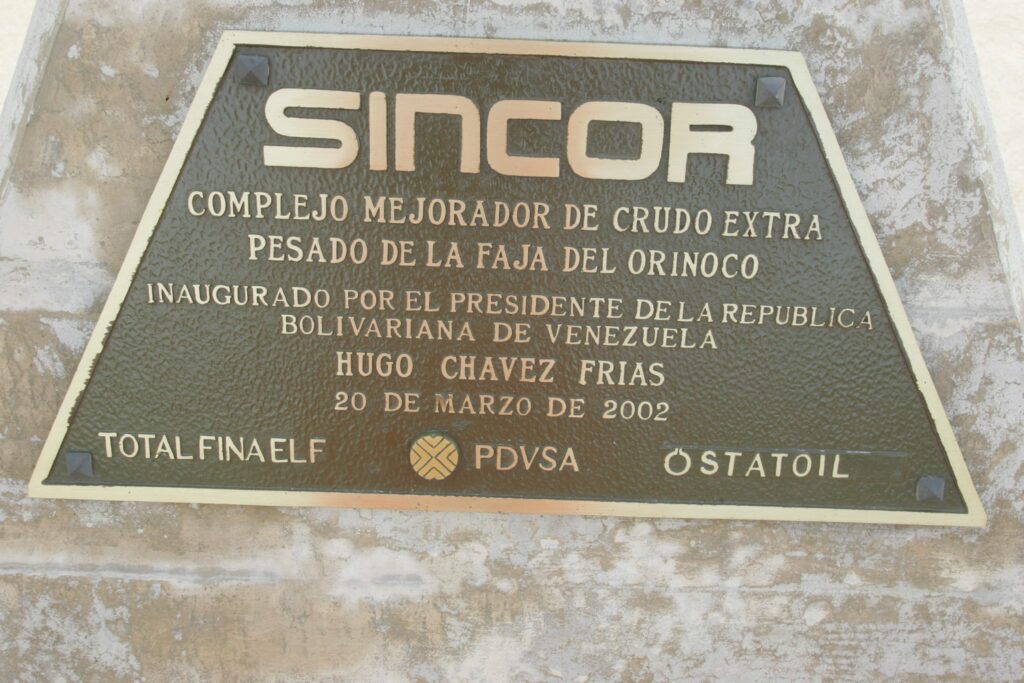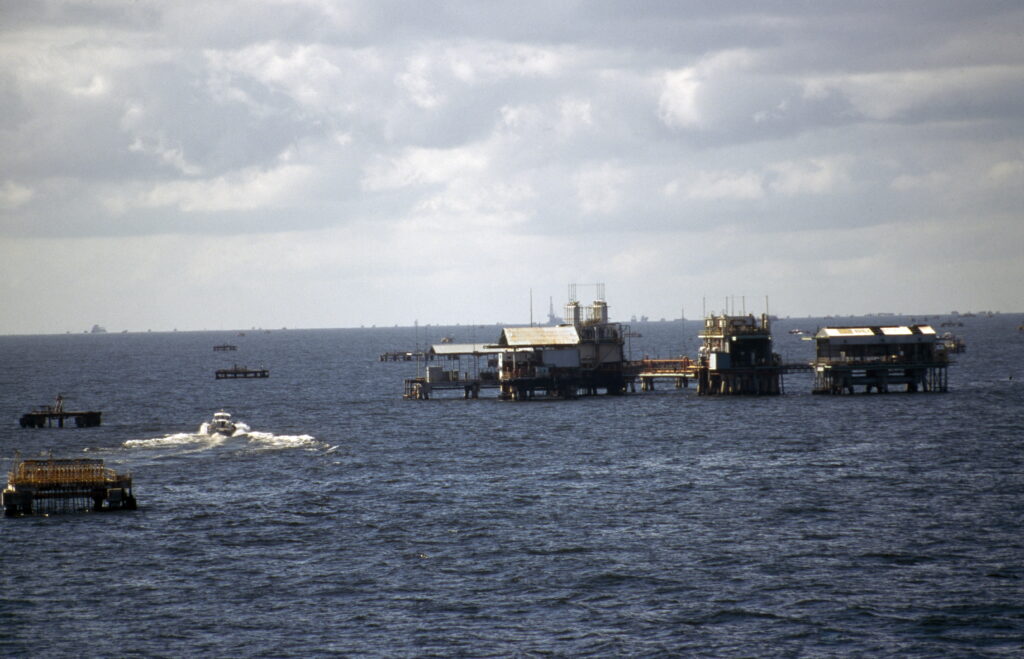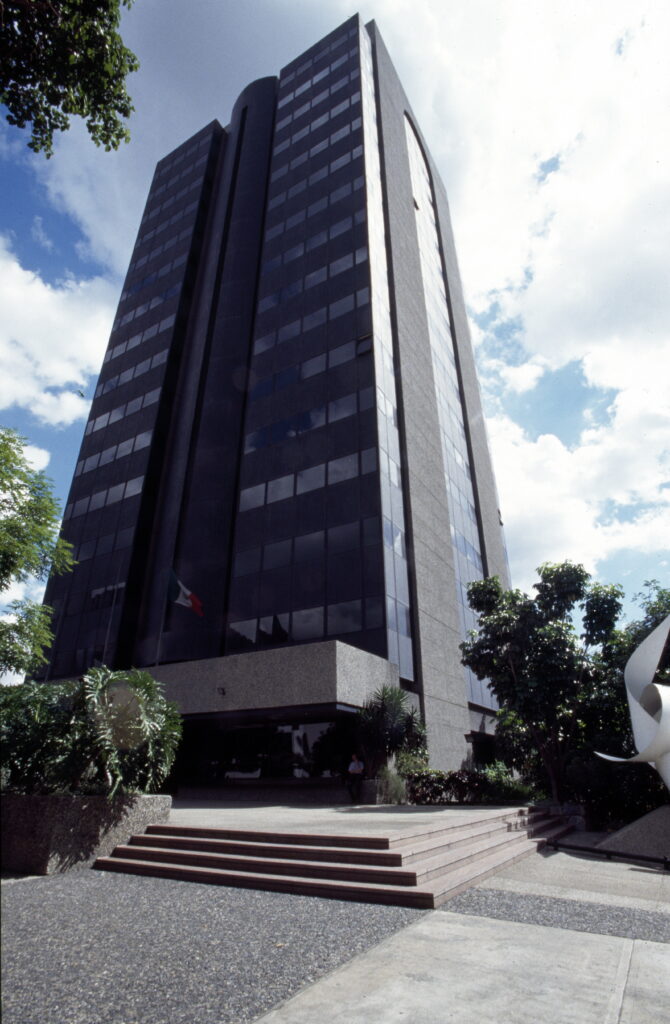24 years with Venezuelan oil sands

Statoil’s involvement in Venezuela was characterised by optimism in its early years, when this was described as the company’s most successful international project. A later judgement, by contrast, is that the engagement has been a failure. Despite upturns and downturns, however, Statoil/Equinor has never considered pulling out of the country. The plan is still to be a long-term player in this oil-rich nation.
Resource-rich
Venezuela lies in northern South America, with a coastline on the Caribbean. A republic, it obtained its first democratically elected government in 1959.
Oil has been produced there since 1914. Some of the oldest facilities are located around and in the shallow Lake Maracaibo –despite its name, a large bay of brackish water. Otherwise, the bulk of Venezuela’s huge oil reserves take the form of viscous bitumen in oil sands found across a river plain further inland. Oil and gas have also been proven offshore. In addition, the country has big deposits of coal, gold and other natural resources.
Revenues from the oil industry were crucial for the national economy. In 1960, the country joined with Saudi Arabia, Iran, Iraq and Kuwait to establish the Organisation of the Petroleum Exporting Countries (Opec). With this association at its back, the Venezuelan government hoped to secure more control of the country’s oil income. Great progress was made in the following decades, and Venezuela achieved the highest standard of living in Latin America. When oil prices slumped in 1986, revenues from this source sank dramatically. At the same time, both population and foreign debt had grown and big inequalities existed between rich and poor. The period since the 1980s was politically volatile, with several attempted coups, until Hugo Chávez was elected president in 1998.[REMOVE]Fotnote: FN-sambandet, https://www.fn.no/Land/venezuela.
Sincor – the biggest project
Under Harald Norvik’s leadership, Statoil set clear goals for international expansion. The breakthrough came in 1990 through a strategic alliance with BP, but the company also had feelers out on its own account. In 1994-95, the Venezuelan government opened up for further foreign participation in order to get help in improving recovery factors for its oil fields. Statoil and others thereby secured a foothold, with the company signing two preliminary development agreements on exploiting heavy crude in the Orinoco Belt – the world’s largest area of oil sands.[REMOVE]Fotnote: Annual report, 1995, Statoil.

Statoil opened an office in Caracas, the capital, in 1997 at the same time as it became involved in the Sincor heavy oil project, which ranked as country’s biggest development. The four licensees in this Orinoco Belt scheme were stated-owned Petróleos de Venezuela (PdVSA), with 38 per cent, French Total with 32 per cent, and Norwegian companies Statoil and Norsk Hydro with 15 per cent each. As early as 1998, in connection with the development decision, Hydro sold its stake to Total. The latter had the main responsibility for the project.[REMOVE]Fotnote: Statoil Magazine (print edition),no 1, vol 18, 1996 and no 1, vol 21, 1999.
With 40 billion barrels of oil proven in the Sincor area, it was expected to produce for 35 years. The drilling programme eventually encompassed 900 wells, and the first of these were drilled in 1999. Early production began the following year at a daily rate of 40 000 barrels. This increased as more wells came on stream.[REMOVE]Fotnote: Annual report, 1999, Statoil.
About 40 000 people in all were involved during the development. Work was disrupted on several occasions by strikes and other action. That included a blockage of the road to the refinery by poor peasants in the area whose earnings were hit while they suffered in addition from pollution associated with the production.[REMOVE]Fotnote: Hatlestad, Helge, 2001, Femti år med oljeproduksjon: min historie.
The plans also covered an upgrading plant in the industrial town of José on the Caribbean, where the heavy, tar-like crude was converted into sulphur-free synthetic oil.[REMOVE]Fotnote: Annual report, 2001, Statoil. This facility came on line in 2002, and was expected to produce 180 000 barrels per day. Total costs were estimated in 2001 at NOK 37 million. Statoil’s share of NOK 5.6 billion was the company’s biggest investment outside Norway at the time.
The company had a number of employees occupying key positions in the project. They contributed to planning and executing the drilling and well operations, development plans, project implementation and the principles for selling the upgraded oil in the US market.[REMOVE]Fotnote: Hatlestad, Helge, op.cit.
Production progressed without problems, except for a 10-week shutdown from mid-December 2002 to the end of February 2003. This related to political unrest and strikes in the Venezuelan oil industry.
Improved recovery in Lake Maracaibo

Statoil’s other project in Venezuela was the LL 652 oil field in Lake Maracaibo, awarded in a 1997 reactivation round with Texaco as operator. When the company acquired a 27 per cent interest, the field had already been producing for 35 years. It lay in an unusual area, where the lake in many places was full of old oil installations which had not been removed.
Plans called for recovery from the field to be removed in the most environment-friendly way possible. For the first time in Venezuelan oil history, a drilling rig was used which injected mud into the reservoir rather than discharging it to the lake.
Three new processing platforms were installed on LL 652, and a water injection programme began on 24 December 1999 with the aim of increasing daily oil production from 12 000 to 80 000 barrels.
Nevertheless, expectations of recovering more oil from the mature field with the aid of new wells and production equipment were not fulfilled. Water injection failed to work as well as expected, and Statoil wrote down the value of the field by NOK 2 billion in 2001.[REMOVE]Fotnote: Annual report, 2001, Statoil. A further NOK 800 million writedown was made the following year.[REMOVE]Fotnote: Annual report, 2002, Statoil.
First offshore
The company’s expectations for Venezuela rose again when it was awarded a 51 per cent interest in, and the operatorship for, exploration block 4 in the Plataforma Deltana area. This was an offshore project, where Statoil had good expertise. Covering 1 435 square kilometres, the block had water depths ranging from 200 to 800 metres. Plataforma Deltana was the setting for the first offshore licences awarded by Venezuela.[REMOVE]Fotnote: Ibid.
Not everyone was pleased. In March 2003, former oil workers who had been dismissed after a general strike demonstrated against the licence awarded to Statoil. The protesters maintained it was dishonest of the company to enter into contracts with the Venezuelan government without taking account of the unrest in the country.[REMOVE]Fotnote: Sysla, 14 March 2003, “Demonstrasjoner mot Statoil i Venezuela”.
Statoil/Equinor also became involved in more offshore projects in the area. Venezuela shares a continental shelf boundary with Trinidad and Tobago, and a gas discovery was made in this zone in 2007. Negotiations were pursued between the two countries over utilising the resources. Agreement was reached in 2015, and Equinor was in dialogue in 2021 with the operator of Trinidad and Tobago’s share of the field on an operating agreement.[REMOVE]Fotnote: Equinor website.
Socialism and higher taxes
Operating parameters for the oil industry changed under president Hugo Rafael Chávez Fría. A socialist, he held the presidency from 1999 until his death in 2013. His aim was to distribute government revenues so that they benefitted the whole population.[REMOVE]Fotnote: Stavanger Aftenblad, 6 March 2013, “Følger med på situasjonen i Venezuela”. When economic times were good, government money was given to welfare and infrastructure projects. But the dependence on oil also made the country vulnerable to fluctuations in petroleum prices.
A radical nationalisation of the oil industry, agriculture, banking, mining, telecommunications, electricity supply, transport and tourism was implemented in the early 2000s.
Political conditions were characterised by unrest, which manifested itself in an unsuccessful attempt at a military coup in 2002. Chávez retained power after a recall referendum in 2004.[REMOVE]Fotnote: FN-sambandet, https://www.fn.no/Land/venezuela. Under his leadership, economic inequalities were sharply reduced. But the economy was vulnerable. Instead of investing in food production, the government used its petroleum revenues to import two-thirds of the food Venezuela needed. That had negative consequences when oil prices fell and inflation reduced the value of the country’s currency.
The oil companies had to accept higher taxes. In the 1990s, Statoil and other oil companies in Sincor paid only one per cent tax because of the uncertainties involved. That rate was increased to 16.67 per cent in 2004, since oil prices had risen.
In 2005, the Sincor partners were charged a royalty of 30 per cent on all production over 114 000 barrels per day. That cost Statoil an extra USD 11.9 million in 2005 and USD 7.4 million the following year.
With effect from May 2006, the government imposed a production tax equalling one-third of the value of liquid hydrocarbons produced in Venezuela. The royalty was deductible from this.
Nationalisation
On 1 May 2007, Labour Day, the screw was tightened even further for the foreign oil companies in Venezuela. A nationalisation was then implemented which meant that the government, through PdVSA, would hold a 60 per cent stake in all licences in the country. The takeover occurred under the supervision of the armed forces.
The outcome for StatoilHydro, as the company was called in 2007-09, was that its interest in Petrocedeño (formerly Sincor) was reduced from 15 to 9.67 per cent. More than half its investment was accordingly taken over by the Venezuelan state. The company received USD 235 million in compensation for the lost holding.[REMOVE]Fotnote: Annual report, 2008, StatoilHydro. It also received USD 3.5 for each barrel relinquished. That was a low figure in 2008, when oil prices were up to USD 100 per barrel.
Other companies affected were ExxonMobil, ConocoPhillips, Chevron, Total and BP. The first two were so dissatisfied with the terms that they pulled out of Venezuela, which was no longer as attractive as it had been for investment by international companies.

StatoilHydro nevertheless wanted to remain. In January 2008, CEO Helge Lund met Rafael Ramirez, Venezuela’s powerful oil minister and PdVSA boss, and signed agreements on further development in the Orinoco Belt. The Petrocedeño deal ran for 25 years from 2008, with PdVSA receiving 60 per cent, Total 30.33 per cent and StatoilHydro 9.67 per cent.[REMOVE]Fotnote: Aftenposten, 26 January 2011, “Statoils mislykkede strategi i Venezuela”.
Petrocedeño aimed to improve recovery of extra heavy crude from the Orinoco Belt area and convert it to a higher quality than Brent Blend – the light North Sea reference oil.
Oil production in the country declined sharply under Chávez. According to figures from Opec, it totalled some 3.5 million daily barrels when he was elected and had fallen to 2.3 million by the time of his death.[REMOVE]Fotnote: Stavanger Aftenblad, 6 March 2013, “Følger med på situasjonen i Venezuela”.
Venezuela had been one of the USA’s most important oil suppliers, but the political climate between the two countries was not good. Following the nationalisation, the Americans imposed a number of sanctions on Venezuela and cut diplomatic ties. The USA was also less dependent on purchasing Venezuelan petroleum after becoming self-sufficient with shale oil.
Internal conditions have deteriorated since Chávez died. The UN reported in 2018 that over 500 people have been killed by the security forces since 2015 and more than three million have fled their homes because of violence, hyperinflation and food shortages. During this period, the proportion of the population living in poverty increased from 30 to 90 per cent. Venezuela is among the world’s countries with the worst records for corruption and for other forms of crime – robberies, murders and kidnappings afflict its society.[REMOVE]Fotnote: FN-sambandet website.
Statoil in post-Chávez Venezuela
After the nationalisation, Statoil’s operations in Venezuela switched to survival mode. The 2014 oil price slump meant conditions went from bad to worse. It was the only Norwegian company in the country by 2016.
Equinor still had personnel seconded to the operations, and continued to support Petrocedeño’s technical and safety progress as well as its whole value chain.[REMOVE]Fotnote: Equinor website. Staffing was sharply reduced, with only one Norwegian among 30 employees. That compared with 60-70 Statoil personnel in Venezuela in 2006-08, only 15 of whom were foreigners.
Arve Aasebø Tjåland reported in 2016 that, as the only Norwegian expatriate, he had to take many precautions. His flat in Caracas could not be on the ground floor. He was not permitted to be out after dark, and all movement outside was by car with its own driver. He and his wife hoarded toilet paper and toiletries for two years when they moved to Caracas. Basic commodities, such as milk, eggs and meat, were difficult to find. Shop shelves were largely bare. Locals had to queue for hours to secure the goods they needed. The country had an extensive black-market-based foreign currency economy and sky-high inflation, which meant the value of money sank from day to day.[REMOVE]Fotnote: E24, 15 April 2016, Nye tall fra IMF: Her stiger prisene med 481 prosent.
Refineries and drilling rigs had problems securing spare parts or upgraded equipment. Cars and tyres were in short supply, and getting hold of brake pads and batteries was virtually impossible. That affected operations.[REMOVE]Fotnote: E24, 10 July 2016, “Arve (57) alene igjen i kriselandet Venezuela”.
Out of heavy oil
Given the practical difficulties and concern for the workforce, it was no surprise that Equinor decided in 2021 to pull out of the heavy oil business in the Orinoco Belt. Its 9.67 per cent holding in the partner-operated Petrocedeño project was transferred to Corporación Venezolana del Petróleo (CVP), a subsidiary of PdVSA.
This transfer, which yielded no gain, was part of Equinor’s strategy to concentrate its international operations in core areas. The company wanted to prioritise locations where it could exploit its competitive advantages – not least offshore with subsea technology.[REMOVE]Fotnote: Equinor press release, 29 July 2021, “Equinor fullfører salg av eiendel i Venezuela”. In Venezuela, it therefore retained its 51 per cent stake in the exploration licence in block 4 on Plataforma Deltana off Cocuina.
arrow_backHow large is a troll?Lufeng – first foreign operatorshiparrow_forward


